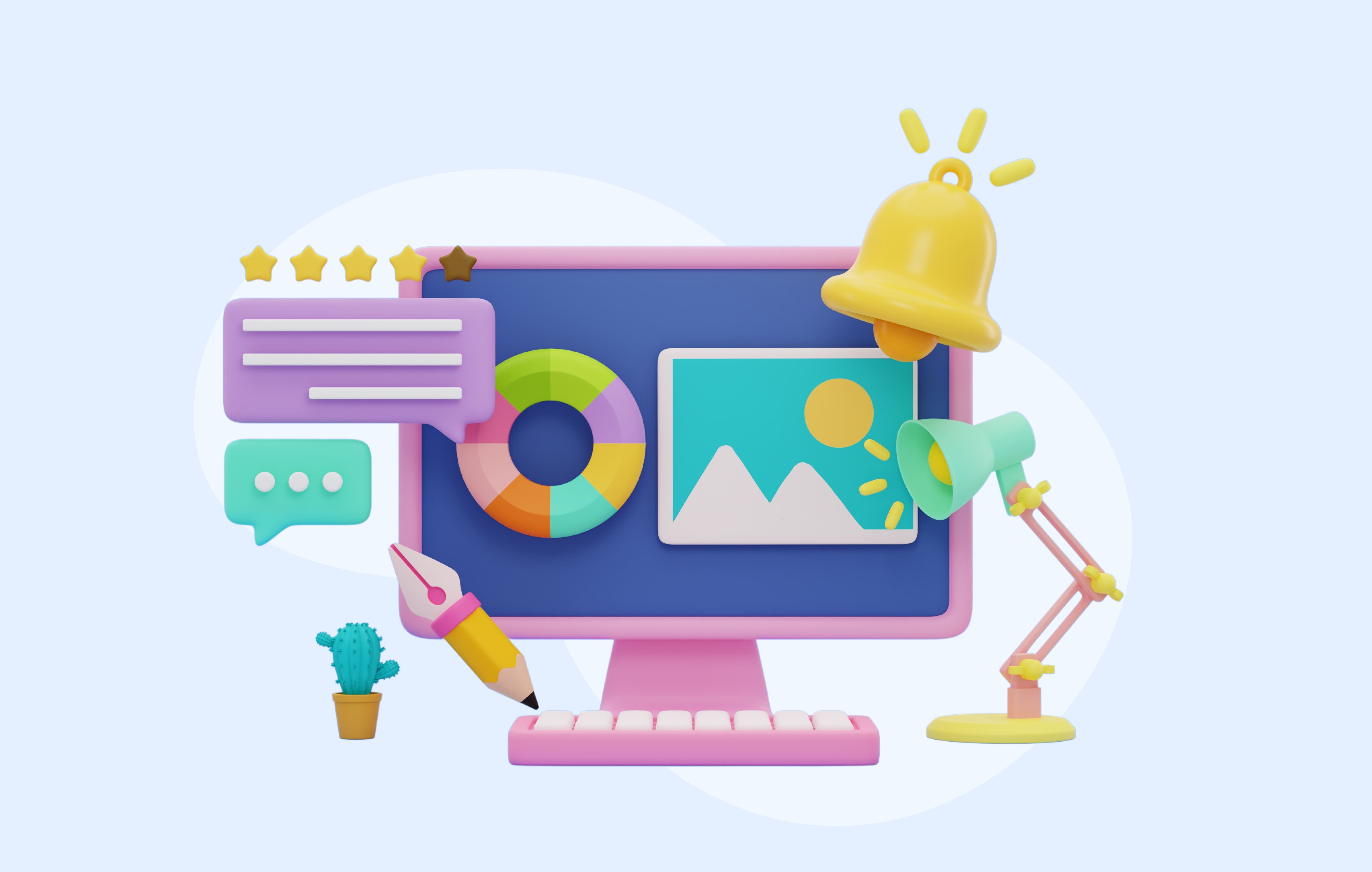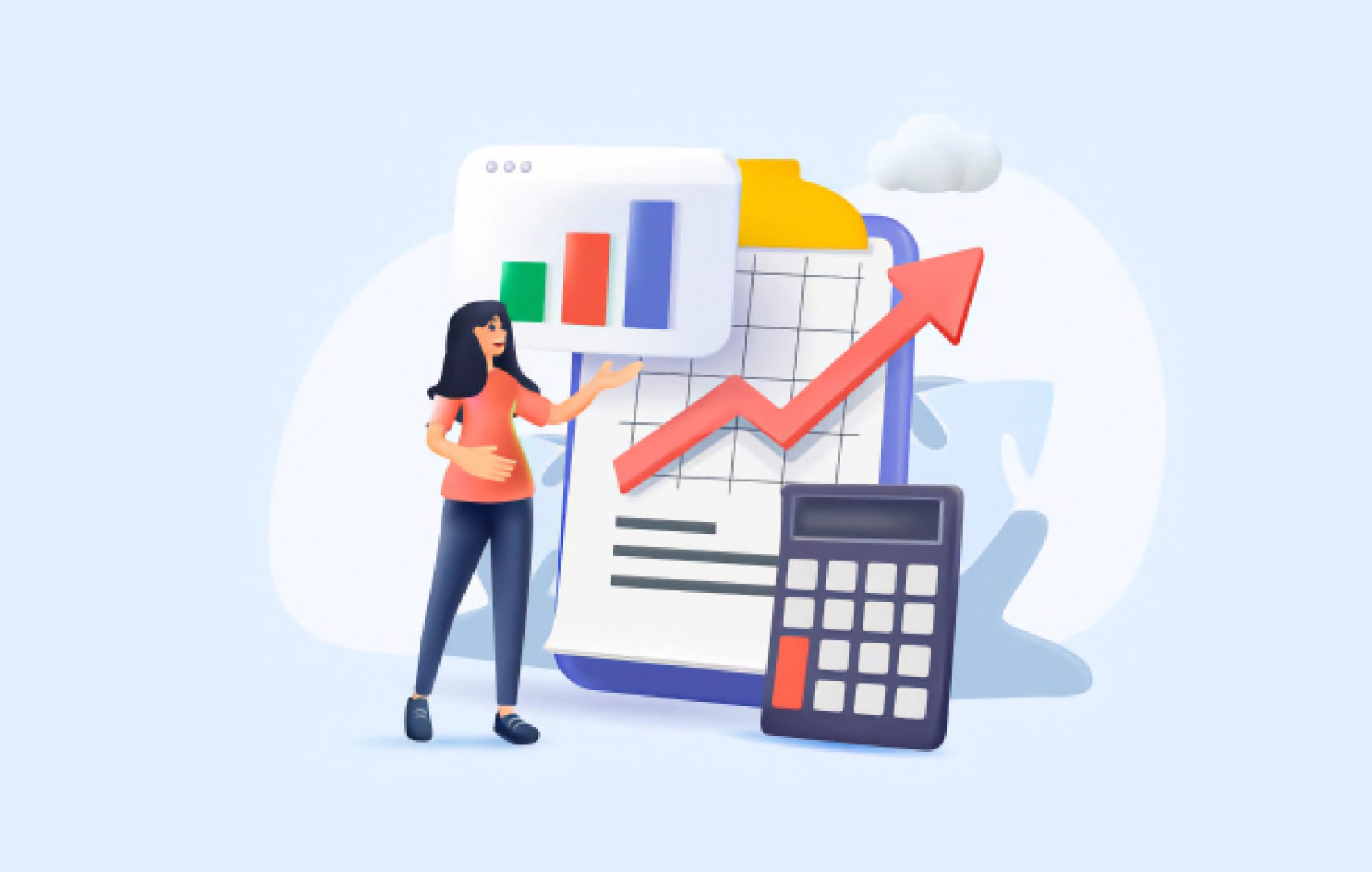Reputation Analysis: The Key to Unlocking Your Brand’s Potential

Is it even worth breaking down how important brand reputation is? Apparently, yes, although anyone will think it is obvious as is. The point is, despite understanding how crucial reputation is, dozens of businesses neglect it in their rush for high net worth, boosted sales, and roadmap compliance.
In this piece, we’ll see why it is important after all. Hopefully, you won’t think about neglecting your brand reputation; even better – remember to establish this reputation as one of the pillars of success.
Brand reputation: the overview
In the marketing world, brand reputation is like a snapshot of your brand, collecting impressions and perceptions of users, stakeholders, and the public about your brand. For instance, trust, credibility, and emotional bonds go in there. It also includes actions and communications that have led to such a perception.
A strong brand reputation signifies that the brand is recognized, respected, and favored by its target audience. It is incredibly beneficial for businesses as it ensures higher sales and a competitive edge in the market, not for a ‘hype season’ but in the long run. Therefore, it allows businesses to compete with stronger rivals and well-established players in the niche.
From a marketing perspective, brand reputation is built through consistent and positive customer experiences, quality products or services, ethical business practices, effective communication strategies, and active engagement with the community.
The theory is all fun and games, but you may start wondering: how brand reputation is evaluated? Naturally, the term itself is quite broad and at this point, reputational analysis comes into the picture. Let’s talk about it next up.
What is a reputational analysis?
In layman’s terms, a reputational analysis is a comprehensive evaluation of a brand's public image and perception. This process involves systematically gathering, assessing, and interpreting data related to how various stakeholders, i.e., customers, employees, investors, and the general public, view and interact with the brand.
Ultimately, reputational analysis identifies the brand's strengths, weaknesses, opportunities, and threats. This understanding can then guide strategic decisions to strengthen and safeguard the brand's image.
As a general rule, there are several key components of reputation the analysis assesses.
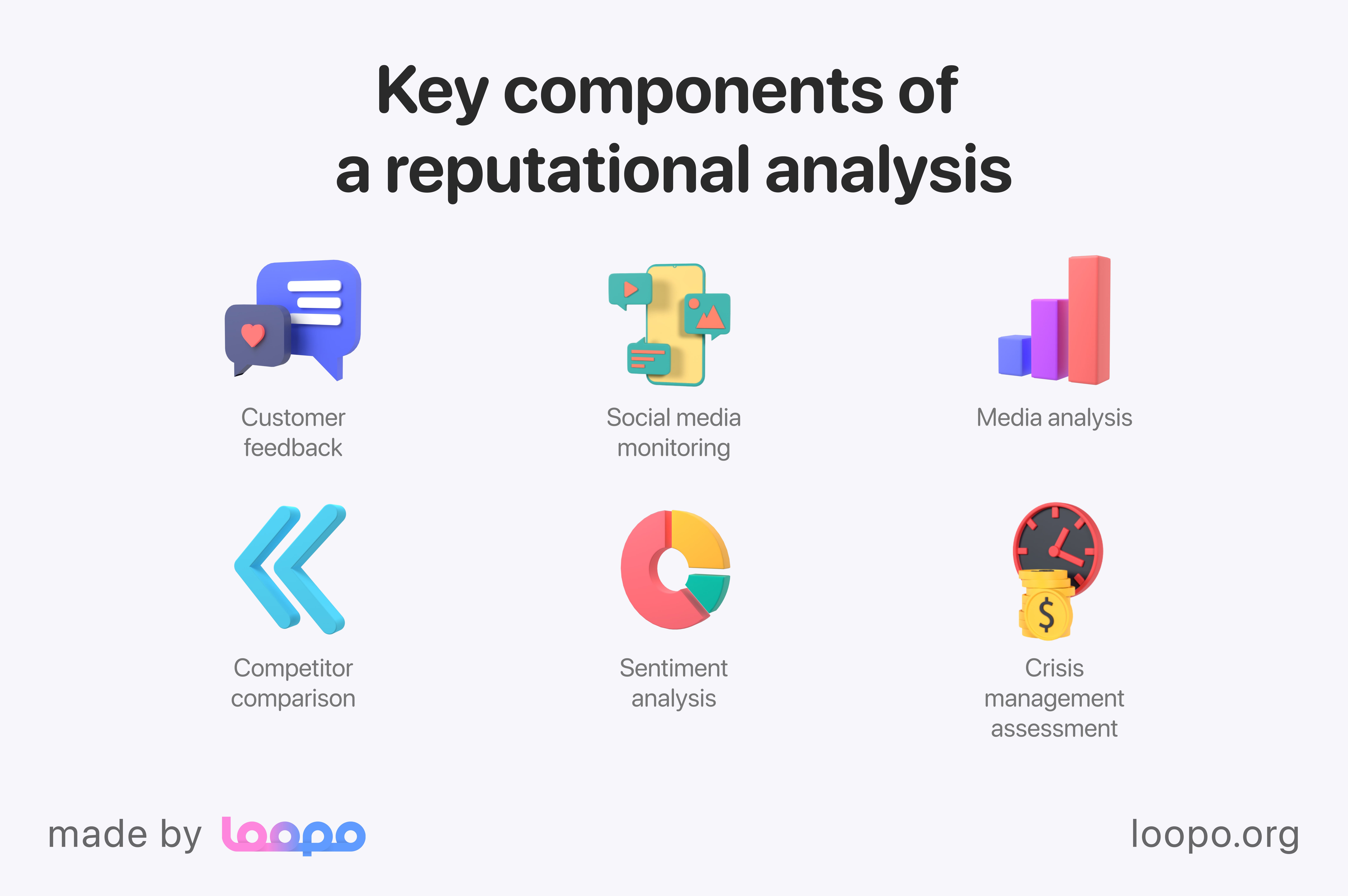
Customer feedback. This includes collecting and analyzing reviews, testimonials, and surveys to gauge customer satisfaction and identify common themes in customer experiences. Such experiences often form the core of a brand’s reputation and, thus, are paramount.
Social media monitoring. This is often about analyzing mentions of your brand, comments about it, and sentiments on social media platforms. Depending on the industry the brand is in, platforms like Reddit, Discord, Facebook, or Instagram can be super helpful.
Media analysis. Once the brand gets enough traction, reviewing news articles, press releases, and other media coverage can help see how the brand is portrayed in the media. Later, users’ perceptions are compared to the brand’s desired image, and adjustments are made if needed.
Competitor comparison. This technique simply compares your reputation against your competitor’s. It helps identify areas where the brand stands out or needs improvement.
Sentiment analysis. Utilizing advanced analytics and artificial intelligence to measure the sentiment expressed in online content about the brand, providing a quantitative view of public perception.
Crisis management assessment. This assessment includes evaluating the brand’s response to past crises or negative events to understand the impact on reputation and effectiveness of the recovery strategies.
Reputation analysis’ importance for businesses
Reputation analysis directly impacts various aspects of a company's success and longevity. To avoid reading between the lines, let’s list a few reasons why it is so important to analyze your business’ reputation.
Building customer trust and loyalty. Understanding how your customers perceive your business helps you build and maintain trust. In turn, trust attracts more people to purchase more and return over time, driving long-term success.
Enhancing brand differentiation.Reputation research helps identify what makes your business unique. It helps you see strengths that can enhance your brand differentiation and attract more customers.
Proactive crisis management. Early detection of negative feedback or issues picking up steam allows you to address problems before they become unbearable to deal with. This go-ahead approach can prevent damage to your reputation and help you keep trustworthy relationships with users.
Attracting new customers. It’s no news that people love reputable brands. Things like positive reviews, word-of-mouth referrals, and favorable media coverage are great helpers in this case. Analyzing your reputation helps you understand and enhance these acquisition channels.
Securing investor confidence. This, perhaps, is one of the most important aspects. If you think about it, a positive reputation is far more attractive to investors, and thus, it plays a huge role in securing funding. Regular reputation analysis ensures you can present a trustworthy and attractive image to potential investors, without hiding facts and concepts substitution.
Improving employee engagement and recruitment. A positive reputation makes your company more attractive not only externally, but internally as well. For instance, people are more likely to look for jobs in reliable companies with competitive salaries, rich internal culture and employee benefits. Analyzing reputation can reveal areas for improving these aspects so that your company becomes a more desired workplace for talents.
Boosting financial performance. A good reputation often correlates with better financial outcomes. Hence, it is plain and simple: customers are willing to pay a premium for trusted brands, leading to higher sales and profitability.
How to do a brand analysis
Now that the theory is all under the belt, let’s move to how-to’s. As you might expect, conducting a thorough social reputation analysis involves examining various facets of your brand's presence and perception in the market. This analysis can be done in several steps.
Social media monitoring
Social media platforms are a gold mine where you can find everything about your brand's reputation. The challenge, however, is knowing how to read it through the tons of data they provide. Some of the most common techniques for social media monitoring include:
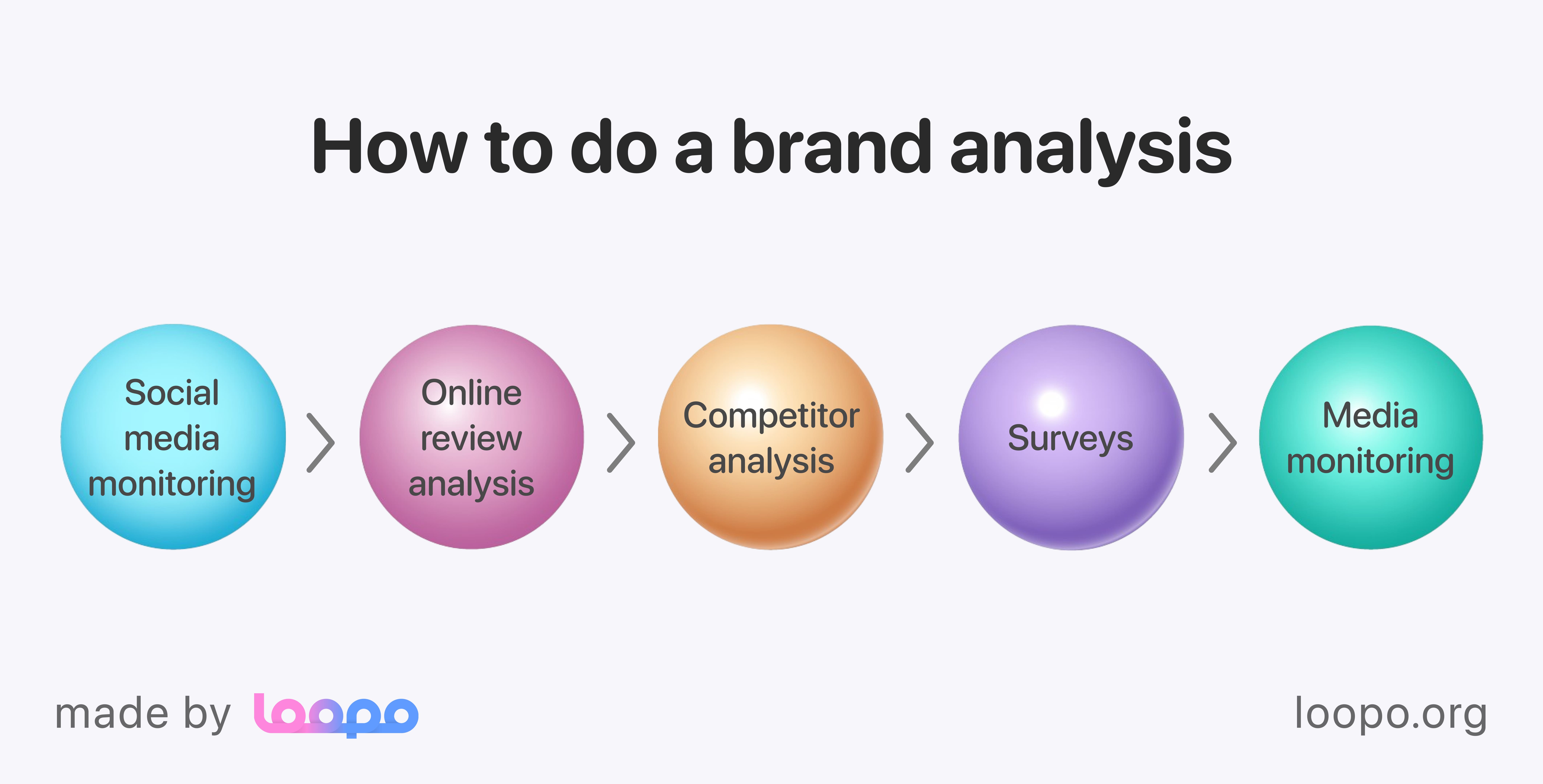
Identifying key platforms. Depending on your niche, focus on the platforms where the majority of your users hang out. As mentioned earlier, these can be X, Facebook, Reddit, TikTok, etc.
Using monitoring tools. There are dozens of tools you can use to track crucial metrics. For instance, tools like Brandwatch or Sprout Social can assist in tracking hashtags and keywords related to your brand.
Analyzing sentiment. Analyze the sentiment of social media mentions to understand whether the public perception of our brand is favorable, unfavorable, or impartial.
Engage with users. Regardless of the size of your company, engage with your people. Respond to comments, answer questions, solve issues. All these things show that you are committed to improving their experience.
Track trends. This one should go without saying. By seeing new trends in your industry, you can quickly adapt and catch the wave. This way, you’ll be able to grow your audience even faster.
Online review analysis
Reviews are the natural indicators of the level of satisfaction people get from using your product or service. Again, depending on your specialization, you can receive reviews on Clutch, Tripadvisor, Google Maps, Facebook, etc. Analyzing reviews, however, is a bit different from social media monitoring. Here’s a comfortable flow:
Collect. Gather reviews from major platforms like Google, Yelp, TripAdvisor, and industry-specific sites.
Categorize. Sort reviews by categories. The most popular can include product/service quality, pricing, customer support, etc.
Identify similarities. Look for recurring themes and issues that customers mention frequently.
Analyze ratings. Pay attention to the overall rating trends and how they have changed over time.
Respond. Address negative reviews professionally and thank customers for positive feedback. Show that you take action to fix issues.
Competitor analysis
As the saying goes, “Keep your friends close but enemies closer.” Learning from your competition is important, as it helps you differentiate your unique value proposition and aspects you can improve.
You can do this by identifying your competition first. List all possible companies offering the same (direct competition) or similar (indirect competition) products or services as you. Once you have found all the competitors that are concerning you, start analyzing them bit by bit.
Analyzing their branding elements, like color palette, logo, tagline, messaging, and overall brand image can help you see how they attract their users. Next, review their social presence, including social media profiles, website, and reviews, to gauge their digital footprint.
Furthermore, compare your products or services with your competitors in key areas like features, pricing, quality, etc. Analyze their marketing campaigns, content strategy, and advertising efforts to identify successful tactics and gaps.
All these details can be extremely helpful to identify the pillars of your competitors’ success. Consequently, this knowledge can be used in your favor, providing ideas for improvements, changes, and updates.
Surveys
If, for some reason, reviews and social media aren’t enough or the picture feels incomplete, there are surveys! These pose a direct way to gather feedback from your customers and stakeholders. They provide quantitative data that can be used to make data-driven decisions. To work with surveys properly, try organizing the flow into manageable steps, same as we did before.
Define objectives. Basically, just find out what you are looking for and what has to be achieved. Be as specific as possible and create specialized surveys aiming to find answers for one or very few specific questions.
Design questions. To gather comprehensive feedback, combine simple closed-ended questions and the ones where respondees need to elaborate. Keep questions concise and relevant. Avoid providing space for speculation so that people answer straight questions.
Distribute surveys. Use email, social media, or your website to distribute the surveys. Consider offering incentives to increase participation. On the other hand, do not spam people with it, as too many offerings often irritate users.
Analyze results. Use survey analysis tools to interpret the data. In vast data arrays, try looking for patterns and insights, as they can help with your brand strategy development.
Media monitoring
Another thing involved in reputation assessment is media monitoring. Once your brand becomes popular, it can be featured in all sorts of channels, including news outlets, blogs, and industry publications. This type of monitoring is super important because, unlike social media platforms, media are typically more detailed and professional. Hence, here’s how you can monitor them:
Set up notifications. Tools like Google Alerts, Mention, or Meltwater allow you to set up notifications once your brand, key executives, and industry-related terms are mentioned. Additionally, you can subscribe using your email to receive alerts on new publications, newsletters, and more.
Track coverage. As with other types of analysis, remember to monitor the volume and sentiment of media mentions. Try looking for patterns, i.e. which media outlets cover your brand the most, what intent they have, and the context of the coverage.
Analyze impact. Assess the impact of media coverage on your brand’s reputation. Positive coverage can enhance your image, while negative coverage may require a strategic response.
Engage with media. To make the most of your media coverage, consider building relationships with journalists and influencers in your niche. Make sure to respond to media inquiries and proactively share newsworthy updates about your brand.
Challenges in reputation analysis
As with any analytical process, reputation analysis can be riddled with challenges due to its nature. Yet, recognizing these challenges can help you tackle them more quickly and enhance your reputation analysis efforts. Let's examine them one by one.
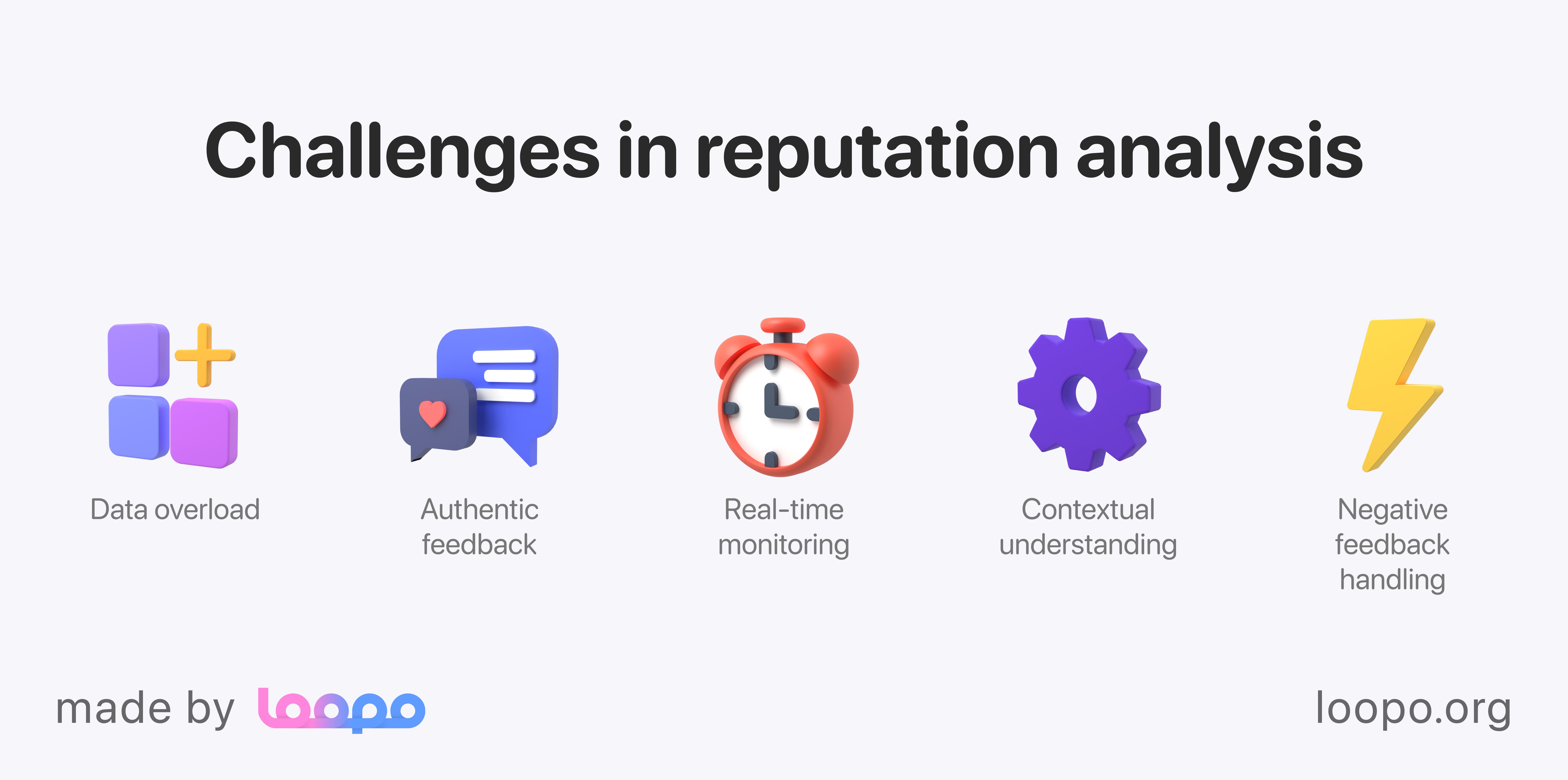
Data overload
With the vast amount of data available from various sources listed above, you can face data overload. Therefore, managing and analyzing this data to extract thoughtful insights can be tedious.
To overcome the challenge, you can use advanced data analytics and AI-powered tools to filter, sort, and analyze large datasets efficiently. Focus on key metrics and trends to avoid getting lost in the details.
Authentic feedback
Fake reviews, spam, and biased feedback are not unheard of. Such feedback can skew the results of your reputation analysis and distinguishing between authentic and inauthentic reviews can be challenging, to say the least.
Hence, implement some kind of verification process to identify genuine feedback and filter out spam or fake content. Some tools may also come in handy to flag suspicious reviews.
Real-time monitoring
Reputation is dynamic and can change rapidly. Real-time monitoring is essential to catch emerging issues early, but it requires constant vigilance and resources, perhaps even a dedicated team.
Monitoring tools that update in real time and alert you about the mood of mentions and sentiment can be of great help.
Contextual understanding
To provide accuracy, reputation analysis must consider the context in which feedback and mentions occur. Without understanding the context, the analysis may present you with many biased conclusions, which are wrong at the core.
The best you can do is to combine quantitative data with qualitative analysis. To differentiate feedback, you will need to involve human analysts. Their expertise can help to review and interpret data, ensuring that contextual nuances are considered.
Negative feedback handling
Remaining professional when facing negative feedback is more challenging than it seems. Moreover, determining the best response strategy for different types of negative feedback can require a lot of time and effort.
To avoid this outcome, a comprehensive response plan should be developed preventively. Ideally, it should include guidelines for addressing different types of negative feedback. Perhaps you can even create templates addressing certain issues if they are common throughout negative comments.
Who can do the reputation analysis?
In short, it’s a two-sided sword. On the other hand, reputation analysis can be done internally, and on the other hand, externally. Let’s peek at both.
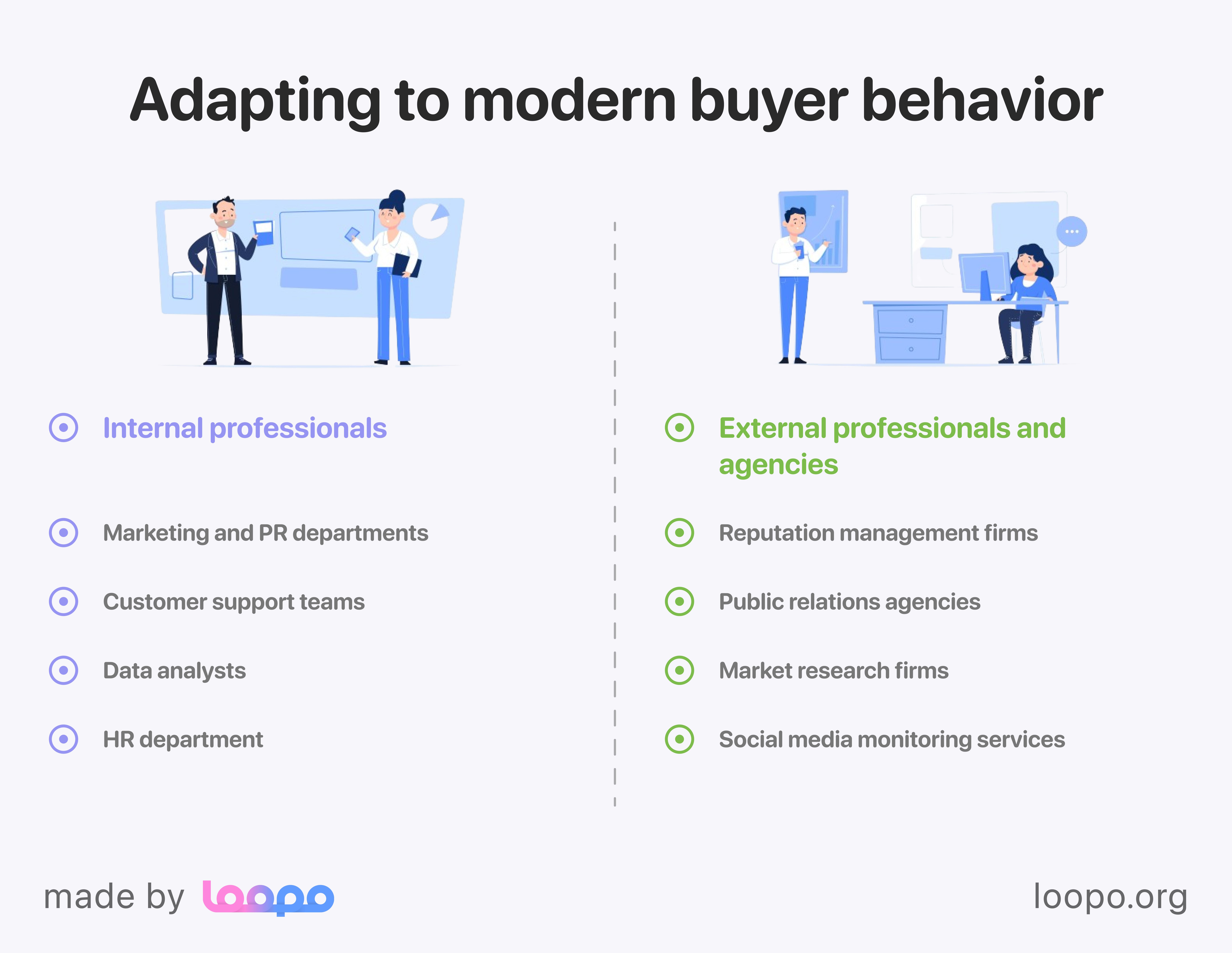
Internal professionals
Internally, reputation analysis can be done by a range of specialists. Depending of the structure of your company, they are as follows:
Marketing and PR departments. These teams are well-versed in brand management and communication strategies, making them perfect for monitoring public perception, managing social media interactions, and responding to media coverage.
Customer support teams. Front-line customer support employees work with your users/buyers directly. Therefore, they can provide extremely valuable insights into common issues, feedback, and sentiment.
Data analysts. In case you have such specialists internally, they can help process large datasets from various sources to identify aspects we covered earlier.
HR department. People working in human resources can provide a lot of internal feedback on your brand. Employee sentiment, for instance, is crucial for understanding your brand's internal reputation and its impact on overall brand perception.
External professionals and agencies
If you’re opting for more professional and independent analysis, external professionals and agencies are the best choice. Yet, there are several subtypes you can choose from.
Reputation management firms. Specialized agencies offer comprehensive services in monitoring, analyzing, and managing a brand’s reputation. They bring expertise and advanced tools to the table.
Public relations agencies. PR firms can handle media relations, crisis management, and strategic communication efforts, helping to shape and protect the brand’s image.
Market research firms. These firms can conduct surveys, focus groups, and in-depth studies to gather data on public perception and brand reputation.
Social media monitoring services. These services use advanced tools to track social media mentions, sentiment, and trends, providing valuable insights into online reputation.
Read also: How Marketing Agencies Make Money: Most Profitable Pricing Models for Agencies
On a closing note, do not forget about collaborations between internal and external teams. It is often the most effective practice, allowing you to consider all possible aspects of forming your brand’s reputation.
Tools for brand reputation analysis
Nowadays, effective analysis is practically impossible without a variety of tools. Here are some of the most commonly used ones.
Social media monitoring tools
Hootsuite. Allows businesses to monitor multiple social media platforms from a single dashboard, schedule posts, and analyze social media performance.
Sprout Social. Provides social media management and brand reputation analytics features, including sentiment analysis and engagement tracking.
Brandwatch. Offers advanced social media listening and analytics, helping businesses track brand mentions, analyze sentiment, and identify trends.
Online review management tools
Trustpilot. Collects and analyzes customer reviews, providing insights into customer sentiment and feedback.
Yelp. Focuses on local businesses, allowing them to manage reviews, respond to feedback, and analyze customer sentiment.
Google Business. Helps businesses manage their online presence on Google, including customer reviews and feedback.
Survey and feedback tools
SurveyMonkey. Allows businesses to create and distribute surveys, collect responses, and analyze feedback to understand customer satisfaction and sentiment.
Qualtrics. Provides advanced survey tools and analytics, helping businesses gather detailed feedback and insights from customers and stakeholders.
Typeform. Offers an intuitive and engaging platform for creating surveys and forms to collect customer feedback.
Media monitoring tools
Meltwater. Monitors media coverage across various channels, including news sites, blogs, and social media, providing insights into brand mentions and sentiment.
Mention. Tracks mentions of your brand across the web and social media, offering real-time alerts and analytics.
Google Alerts. A free tool that sends notifications whenever your brand is mentioned in news articles, blogs, or other online content.
Competitor analysis tools
Semrush. Offers comprehensive competitor analysis, including insights into their online presence, SEO strategies, and advertising efforts.
Ahrefs. Provides tools for analyzing competitors' backlinks, keywords, and content strategies, helping businesses understand their competitive landscape.
SimilarWeb. Analyzes competitors' website traffic, audience behavior, and engagement metrics.
Sentiment analysis tools
Lexalytics. Uses natural language processing (NLP) to analyze text data and determine sentiment, themes, and categories.
MonkeyLearn. Provides machine learning tools for sentiment analysis, text classification, and data extraction from customer feedback and reviews.
RapidMiner. Offers advanced data analytics and sentiment analysis features to process large datasets and extract meaningful insights.
Customer relationship management (CRM) tools
Salesforce. Integrates various aspects of customer relationship management, including feedback collection, social media monitoring, and analytics.
HubSpot. Combines CRM, marketing, and customer service tools, helping businesses manage customer interactions and analyze feedback.
Zendesk. Focuses on customer support and engagement, providing tools for managing customer inquiries and analyzing feedback.
Reputation management platforms
Reputation.com. Offers comprehensive reputation management solutions, including review monitoring, social media management, and sentiment analysis.
ReviewTrackers. Helps businesses monitor and analyze reviews from multiple platforms, providing insights into customer sentiment and trends.
Yext. Manages online listings, reviews, and local SEO, helping businesses maintain a consistent and positive online presence.
Conclusion
On a closing note, keep in mind that the brand’s reputation is not all black and white. It is colorful, i.e., it contains dozens of aspects forming it. Therefore, a careful and well-thought-out approach is required to analyze it.
On the other hand, marketing is a wide niche as well. Hence, if there’s anything else that interests you, there’s a good chance you’ll find it in our blog.

